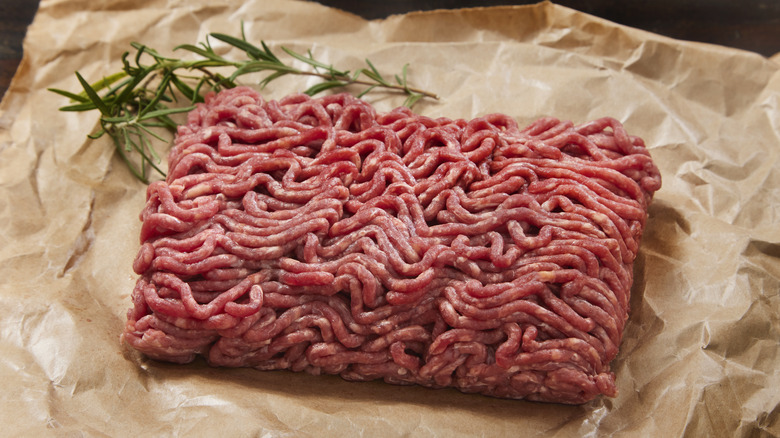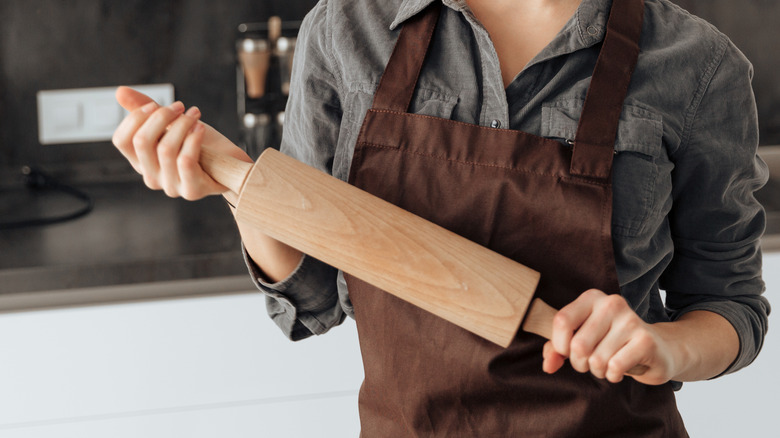The Baking Tool That Makes Freezing Ground Beef A Breeze
Freezing ground beef may seem like a straightforward process, but, when the time comes, it can often prove complicated. There's a lot to keep in mind. For instance, you'll want to add an extra layer of foil to prevent freezer burn and pay careful attention to when, exactly, the beef enters the freezer. Oh, and you especially want to preserve the texture of your frozen ground beef, which can turn mushy over time.
Luckily, you can easily resolve this latter setback with one common household tool. To prevent your ground beef from turning soggy, a rolling pin is your new best friend. Yes, the same tool you use for making dough is actually applicable to raw meat.
To effectively freeze ground beef with a rolling pin, all you have to do is, well, roll. Before your meat even touches the freezer, you want to roll down and over against the meat until it flattens entirely. The goal here is to squash any lingering air pockets and minimize potential moisture that could result in a mushy mess. A rolling pin likewise helps portion out ground beef and makes freezer storage all the more convenient. As for why, exactly, this trick circumvents soggy meat, look at the structure of your ground beef.
Rolling pins prevent frozen beef from retaining unwanted moisture
Put your rolling pin to work, and you'll thank yourself when it comes time to thaw your frozen ground beef. Your rolling pin does the trick because it addresses your meat's composition — and helps circumvent the inadvertent effects of freezing.
In general, foods change texture during the freezing process. Liquids, of course, turn solid, which means that any lingering water in food develops into ice crystals. So, when meat freezes, its moisture becomes crystals that ultimately push against your ground beef. This, in turn, weakens the overall structure of your frozen meat – and transforms its texture. So, what was once a firm piece of ground beef ultimately softens into a mushy, sub-optimal meal.
Luckily, a rolling pin presses down against the meat, minimizing excess moisture by way of those air pockets. Of course, you don't have to use a rolling pin; any like object — we're looking at you, wine bottles — should yield a similar outcome. Follow this trick, and before you know it, your meat will thaw and your rolling pin will more than prove its worth.

